Kevin Mitchell: Better than Ken Griffey Jr?
The Power Hitter Pantheon: Baseball’s Greatest Home Run Heroes
This project aims to determine the greatest home run hitter of all time by comparing each slugger’s statistics to the average of their era using three formulas. The final adjusted stats will then be used to compare them head-to-head with other all-time greats.
Kevin Mitchell will be the next legendary MLB slugger examined in this study. For a detailed biography of Mitchell, please click here.
Before analyzing Mitchell's career numbers, it's essential to recognize his accomplishments as a hitter. Let's examine his rankings in key hitting statistics throughout his career. Kevin Mitchell appeared on the MLB leaderboards in the following categories:
1994: #8 (.429)
1989: #1 (.635)
1990: #5 (.544)
1994: #4 (.681)
1989: #1 (1.023)
1990: #10 (.904)
1994: #4 (1.110)
1989: #8 (100)
1989: #1 (345)
1989: #1 (47)
1990: #6 (35)
1994: #10 (30)
1989: #1 (87)
1989: #1 (136)
1989: #1 (11.55)
1990: #5 (14.97)
1991: #7 (13.74)
1994: #2 (10.33)
Kevin Mitchell’s 1989 season was exceptional, with 7 #1 rankings in Slugging Percentage (.635), OPS (1.023), Total Bases (345), Home Runs (47), Extra Base Hits (87), Runs Created (136), and AB/HR (11.55), plus a #8 ranking in Runs Scored (100), totaling 8 leaderboard appearances. Mitchell’s versatility across power, efficiency, and on-base metrics underscores his offensive impact.
Now that we have a clear understanding of Mitchell's accomplishments, we can proceed with the career analysis. According to Baseball Reference, Mitchell’s official statistics reveal a total of 234 home runs over 4,134 at-bats resulting in an average of at-bats per home run 17.67 (AB/HR).
Kevin Mitchell spent the majority of his career competing in the National League (NL): 1984, 1986-1991, and 1993-1994. Mitchell exclusively played in the American League (AL) in 1992 and again from 1997 to 1998.
Mitchell played in both the AL and NL in 1996. Since the designated hitter (DH) rule applied exclusively to the AL at the time, hitters are compared within their respective leagues. To calculate the overall 1996 league averages for Mitchell, we combined and averaged out the figures from both leagues.
When aggregating the statistics from each of the seasons Mitchell competed in, the league totals include 905,393.5 at-bats and 22,941 home runs, resulting in an average of 39.47 at-bats per home run (AB/HR).
With this data, we can evaluate how Mitchell’s performance compared to the average AL/NL hitter of his era.
Raw Difference: -21.80
Formula: League Average – Player Career AverageImprovement Factor: 2.23x
Formula: League Average / Player Career AveragePercentage Difference: 55.23%
Formula: (League Average – Player Career Average) / League Average × 100%
AB/HR
Mitchell’s 17.67 AB/HR indicates he hit a home run approximately once every 17.67 at-bats, showcasing exceptional power for his era. A lower AB/HR ratio is better, as it means the player hits home runs more frequently. The league average of 39.47 AB/HR suggests that the typical hitter in Mitchell’s era required more than twice as many at-bats to hit a home run compared to Mitchell. This highlights Mitchell’s elite power-hitting ability relative to his peers.
Raw Difference
Mitchell’s AB/HR was 21.80 at-bats lower than the league average, quantifying his superior home run frequency.
Improvement Factor
Mitchell was 2.23 times more efficient at hitting home runs than the average hitter. This is a strong indicator of his power dominance.
Percentage Difference
Mitchell’s AB/HR was 55.23% better than the league average, meaning he significantly outperformed the typical hitter in his era.
Kevin Mitchell’s 17.67 AB/HR is exceptional, placing him among the top power hitters of his era. His ability to hit home runs at more than twice the rate of the average hitter (2.23x improvement factor) underscores his slugging prowess. A 55.23% improvement over the league average is a massive margin, indicating Mitchell was not just above average but among the elite.
In our initial case study, we analyzed the careers of prominent Japanese and Negro League sluggers, alongside MLB greats Mickey Mantle, Alex Rodriguez, and Joe DiMaggio for comparison.
Now, let's compare Mitchell’s career statistics against these baseball legends to gain a clearer perspective on how he stacks up.
Kevin Mitchell’s statistics closely mirror those of George Scales, a Negro League legend. Scales (-41.58/2.22x/54.99%) hit a total of 64 home runs over 2,178 at-bats resulting in an average of at-bats per home run 34.03 (AB/HR).
Among the league leaders in home runs during the 1990s, we have analyzed the power-hitting careers of the following players:
Vladimir Guerrero (-14.40/1.79x/44.23%)
Vinny Castilla (-13.04/1.61x/37.95%)
Tino Martinez (-12.08/1.58x/36.54%)
Shawn Green (-10.13/1.47x/31.94%)
Sammy Sosa (-20.59/2.42x/58.73%)
Ryne Sandberg (-13.89/1.47x/31.84%)
Ron Gant (-16.41/1.82x/44.95%)
Rob Deer (-22.42/2.33x/57.06%)
Rafael Palmeiro (-15.95/1.87x/46.43%)
Mo Vaughn (-16.09/1.95x/48.82%)
Mike Piazza (-17.68/2.09x/52.20%)
Mickey Tettleton (-16.65/1.87x/46.47%)
Matt Williams (-17.62/1.95x/48.75%)
Mark McGwire (-23.70/3.23x/69.08%)
Manny Ramirez (-17.29/2.16x/53.80%)
Larry Walker (-17.35/1.96x/49.04%)
Kevin Mitchell’s raw difference is the third best behind only Mark McGwire (-23.70) and Rob Deer (-22.42). Notable players inferior raw differences include Sammy Sosa (-20.59), Mike Piazza (-17.68), and Manny Ramirez (-17.29).
Kevin Mitchell’s 2.23x improvement factor is strong and is only surpassed by Mark McGwire (3.23x), Sammy Sosa (2.42x), and Rob Deer (2.33x). Mitchell’s 2.23x is higher than those of Manny Ramirez (2.16x), Mike Piazza (2.09x), Rafael Palmeiro (1.87x), and Vladimir Guerrero (1.79x).
Kevin Mitchell’s percentage difference of 55.23% is impressive and only ranks behind Mark McGwire (69.08%), Sammy Sosa (58.73%), and Rob Deer (57.06%). Mitchell’s 55.23% beats out the rest of the list with notable names like Manny Ramirez (53.80%) and Mike Piazza (52.20%).
Kevin Mitchell’s home run performance in the 1990s, as reflected by a raw difference of -21.80, an improvement factor of 2.23x, and a percentage difference of 55.23%, places him among the elite power hitters of the decade. Ranking 4th overall out of 17 players, Mitchell trails only Mark McGwire, Rob Deer, and Sammy Sosa, but surpasses numerous stars like Manny Ramirez, Mike Piazza, Vladimir Guerrero, Larry Walker, and Rafael Palmeiro.
If you find this content valuable and would like to support the ongoing studies and articles, your contributions via CashApp are truly appreciated.
Your support helps fund the tools, research, and time dedicated to these projects. Every contribution, no matter the size, plays an important role in keeping this work going.
If you're unable to contribute financially, sharing this article on your social media (X, Facebook, etc.), emailing it to a friend, or texting the link to a fellow baseball fan is just as valuable.
Thank you for your support!




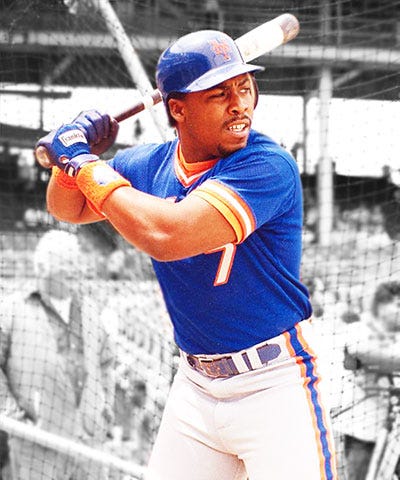
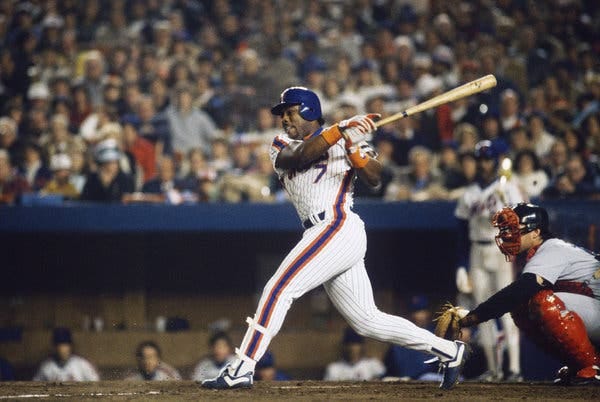
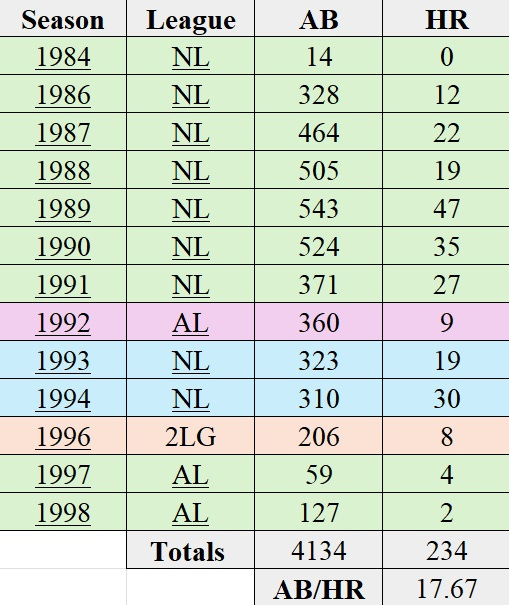
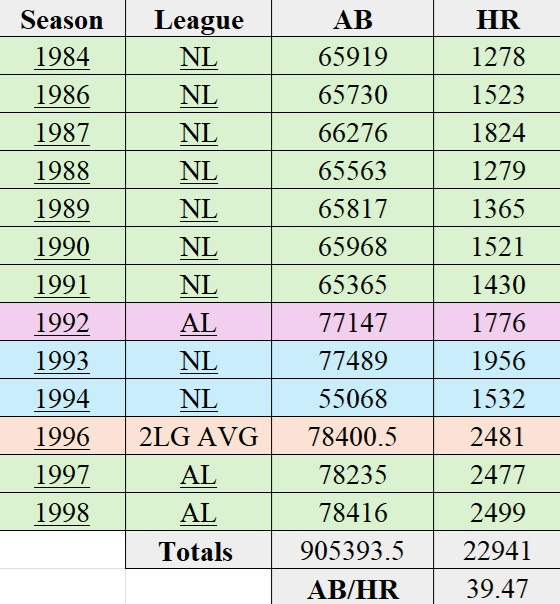

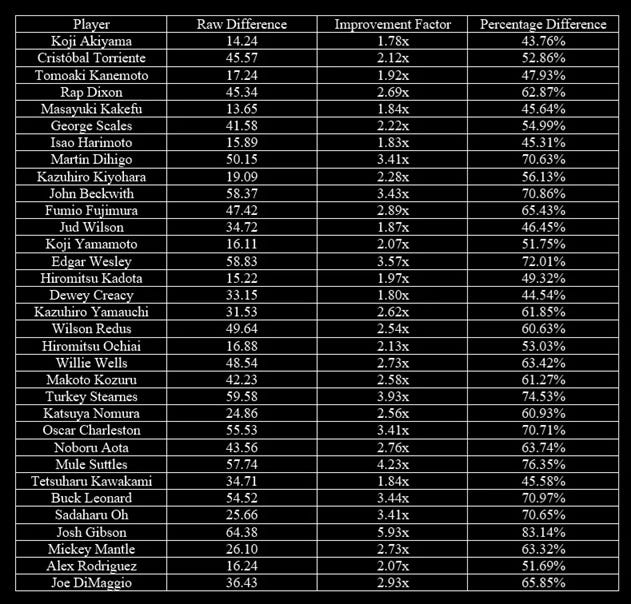
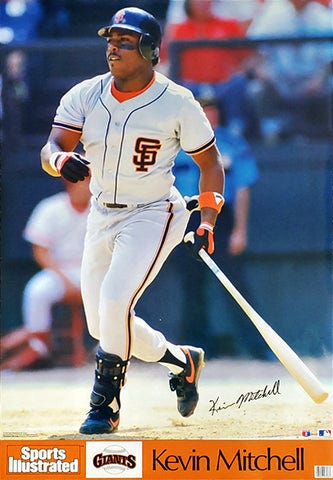

While I'm amazed at his versatility and ability to play several positions ( including Catcher ), his inability to stay healthy is a no for me. I had a card of his from 96. He ballooned up. No way he could've kept up with Griffey then. However, good pick for this.